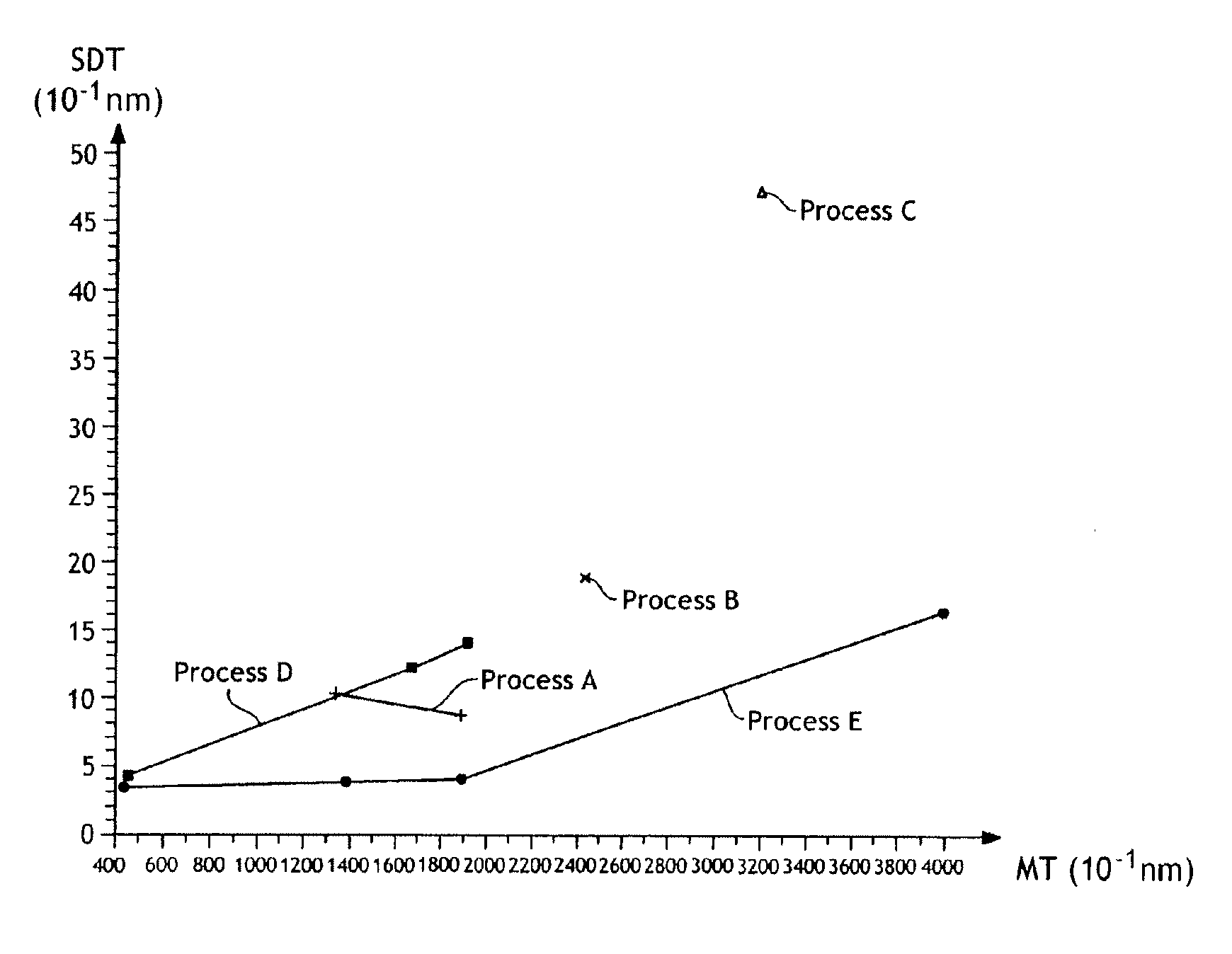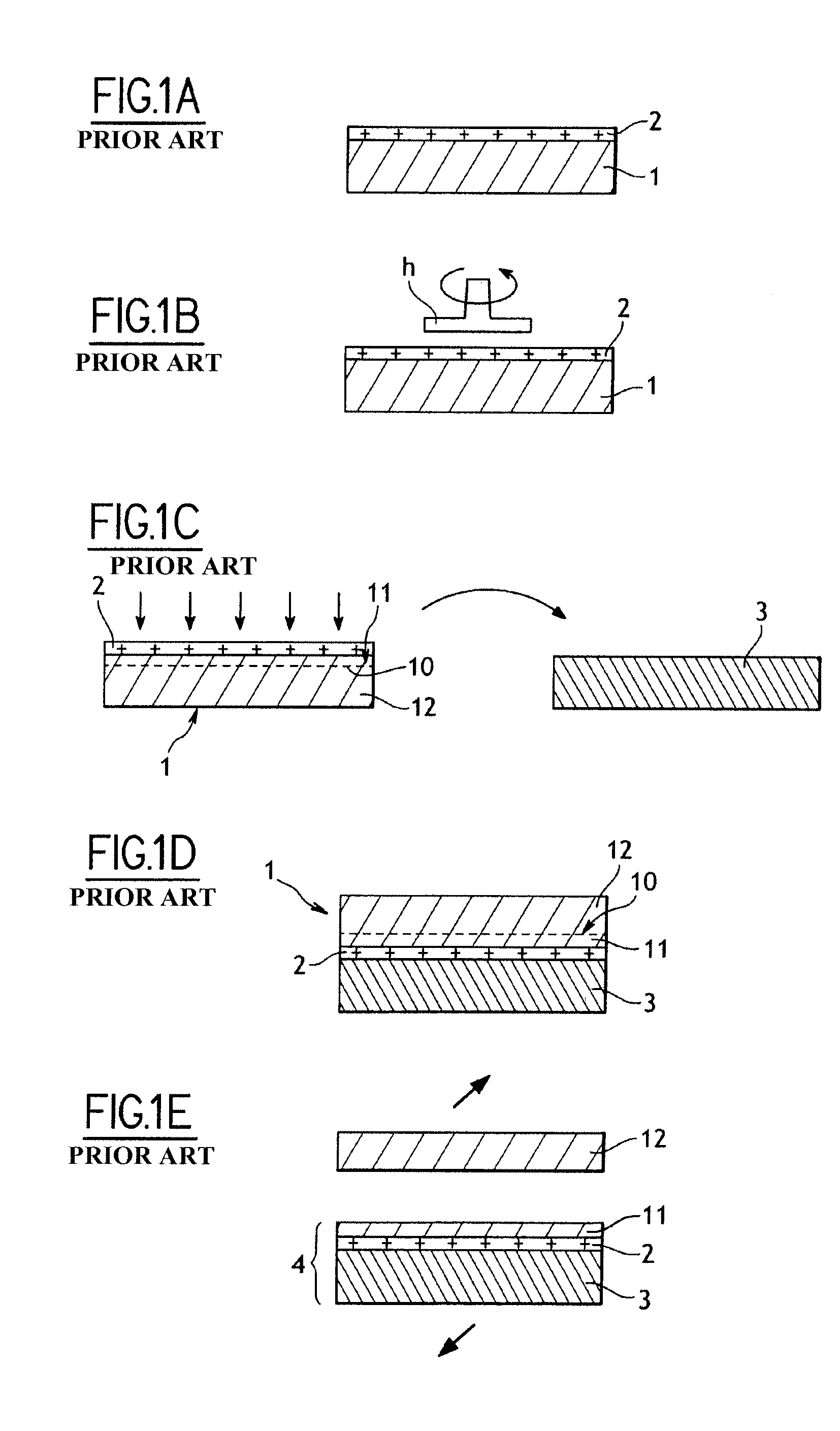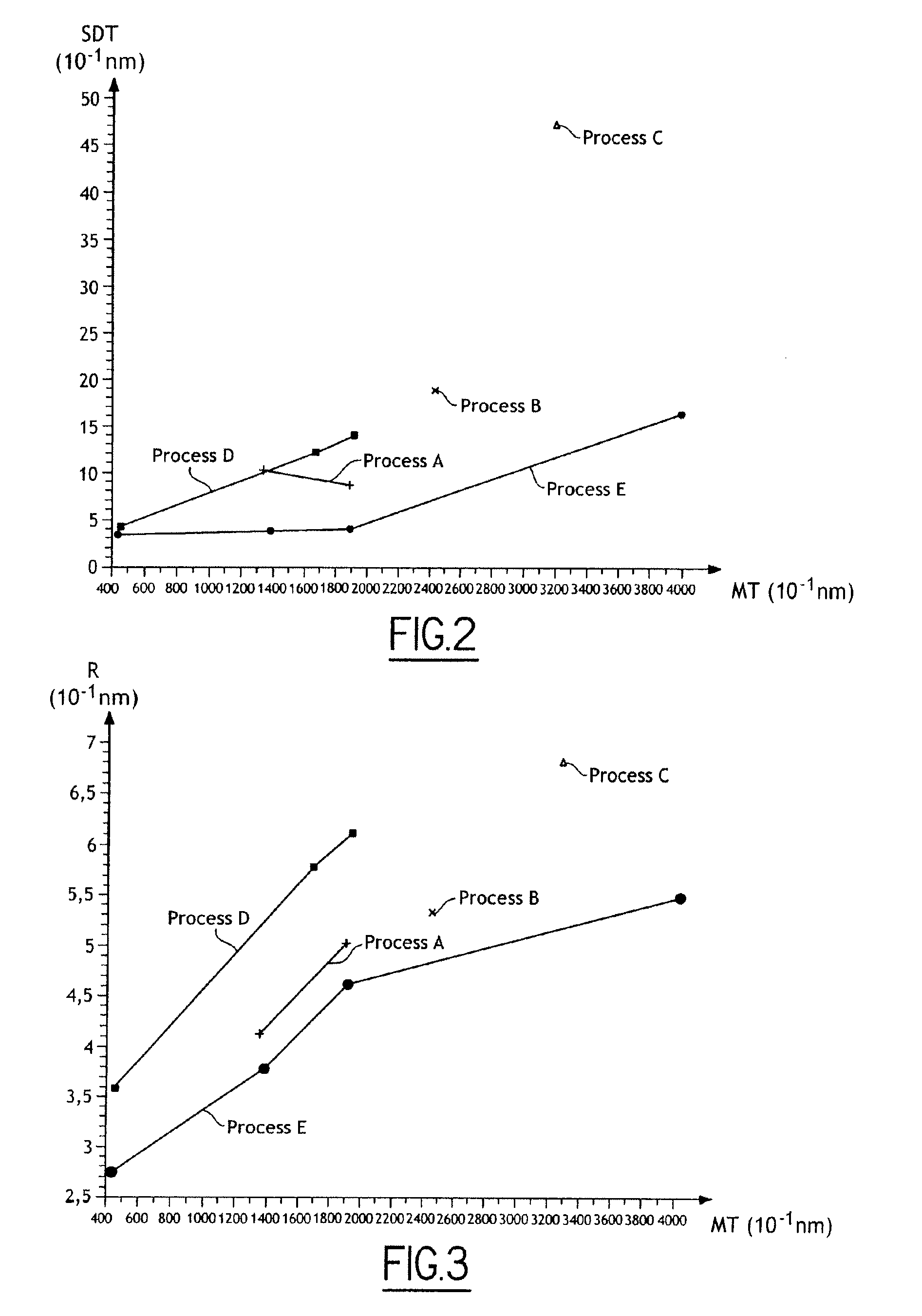Method of manufacturing a silicon dioxide layer
a manufacturing method and silicon dioxide technology, applied in the direction of liquid surface applicators, coatings, chemical vapor deposition coatings, etc., can solve the problems of lack of reproducibility of process, lack of uniformity of resulting layer, low process throughput, etc., to eliminate the use of chemical and mechanical polishing and superior electrical features
- Summary
- Abstract
- Description
- Claims
- Application Information
AI Technical Summary
Benefits of technology
Problems solved by technology
Method used
Image
Examples
Embodiment Construction
[0028] According to the invention, the silicon dioxide deposition step of FIG. 1A is improved as mentioned above, but the method of the present invention.
[0029] It has now been discovered that the roughness of a silicon dioxide layer obtained by a “LPCVD TEOS” deposition process may be reduced by the use of a flow of a diluent gas simultaneously with a flow of TEOS during the deposition process. The diluent gas is preferably nitrogen but it can be any other gas that is not reactive with TEOS, of which argon (Ar) and helium (He) are non-limiting examples. Alternatively, any mixture of such non-reactive gases can be used.
[0030] The methods for determining the best operating conditions will now be described. Silicon dioxide deposition was performed by a low pressure vapour chemical deposition (LPVCD) process, which includes introducing a batch of source substrates inside the process chamber of a LPCVD reactor, and introducing gaseous flow of different chemical reactants, at elevated ...
PUM
| Property | Measurement | Unit |
|---|---|---|
| temperature | aaaaa | aaaaa |
| temperature | aaaaa | aaaaa |
| temperature | aaaaa | aaaaa |
Abstract
Description
Claims
Application Information
 Login to View More
Login to View More - R&D
- Intellectual Property
- Life Sciences
- Materials
- Tech Scout
- Unparalleled Data Quality
- Higher Quality Content
- 60% Fewer Hallucinations
Browse by: Latest US Patents, China's latest patents, Technical Efficacy Thesaurus, Application Domain, Technology Topic, Popular Technical Reports.
© 2025 PatSnap. All rights reserved.Legal|Privacy policy|Modern Slavery Act Transparency Statement|Sitemap|About US| Contact US: help@patsnap.com



